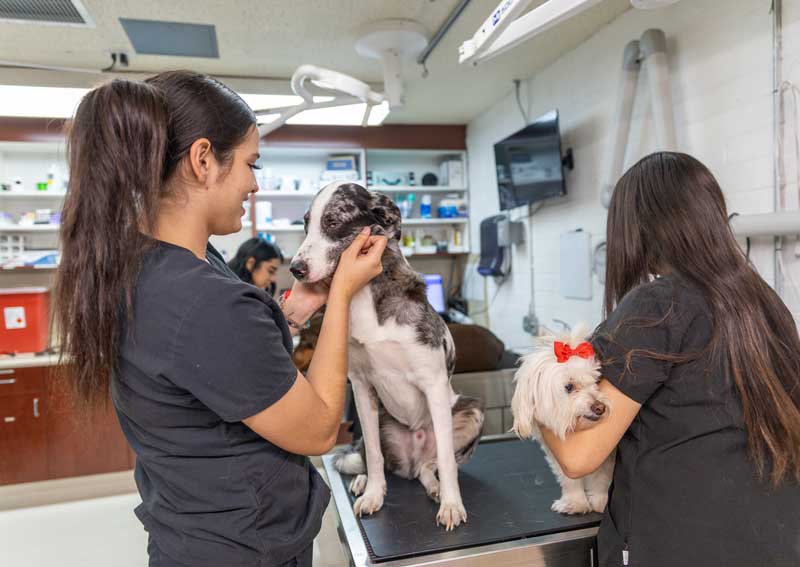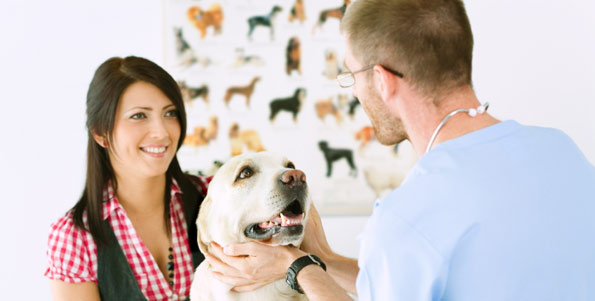Most Common Emergency Surgeries Performed at animal emergency care bellingham Centers
Most Common Emergency Surgeries Performed at animal emergency care bellingham Centers
Blog Article
Everything About Veterinarian Surgical Procedure: Recognizing the Relevance of Expert Look After Your Animals
Vet surgical procedure is an essential part of animal health care. It incorporates various treatments, from regular optional surgical treatments to urgent interventions. Comprehending the complexities of these surgical treatments can help pet owners make informed decisions. The preparation, execution, and recovery phases are important for ensuring the well-being of pets. With proper knowledge, proprietors can browse the intricacies of veterinary treatment. What variables should be considered prior to a pet dog undergoes surgical procedure?
Kinds of Veterinarian Surgeries
When an animal calls for medical treatment, recognizing the various types of vet surgical treatments can assist family pet owners make notified choices. Vet surgical treatments can be extensively classified into three main kinds: elective, immediate, and emergency surgeries. Optional surgical procedures, such as spaying or neutering, are prepared treatments that are not immediately dangerous. Immediate surgeries, like those for foreign body elimination, should be done quickly however are not serious in the moment. Emergency surgical treatments, such as those dealing with extreme injury or interior blood loss, are essential and require immediate attention.Additionally, surgeries can differ in intricacy, ranging from minimally invasive laparoscopic treatments to extra comprehensive open surgical procedures. Each sort of surgery carries its very own dangers and recuperation processes. Comprehending these categories allows pet dog owners to take part in significant conversations with vets, resulting in better results for their precious pets.
Getting ready for Your Pet's Surgical procedure
Preparing for a pet dog's surgical procedure involves a thorough checklist to ensure all fundamentals are covered. Efficient communication with the vet is important for comprehending the treatment and any necessary pre-operative actions - tplo surgery. In addition, having clear post-operative care instructions will help proprietors give the very best assistance for their recuperating pet dogs
Pre-Surgery List Fundamentals
Assuring a smooth surgical experience for a pet dog requires careful preparation and interest to information. A pre-surgery checklist is crucial for animal proprietors to follow. Verifying the set up surgery day and time is vital. Proprietors should additionally validate that their pet has fasted according to the veterinarian's directions, typically for 8-12 hours before surgical treatment. Collecting needed clinical records, consisting of inoculation history, is necessary for the veterinarian's review. It is additionally advisable to prepare a comfortable space at home for the animal's healing after surgical treatment. Finally, owners ought to have a plan for transportation to and from the vet center, making sure that the pet is safe and comfortable throughout the journey. Adhering to these actions can greatly boost the surgical experience.
Communicating With Your Vet

Reliable interaction with the veterinarian is necessary for an effective surgical experience for animals. Proprietors need to be prepared to discuss their pet's case history, consisting of any type of pre-existing conditions, drugs, and allergic reactions. This information helps the vet examine risks and customize the surgical plan accordingly. Additionally, pet dog proprietors ought to ask inquiries regarding the procedure, anesthesia, and expected end results to ensure they completely comprehend the procedure. Clarifying any type of uncertainties can relieve anxiety for both the family pet and the proprietor. It is likewise important to communicate any behavior adjustments or worries observed in the family pet leading up to the surgical procedure. Inevitably, clear dialogue fosters depend on and partnership, guaranteeing that pet dogs get the very best feasible care throughout their surgical journey.
Post-Operative Care Instructions
After going over the surgery with the vet, family pet owners need to concentrate on post-operative treatment directions to facilitate a smooth recovery for their pets. These directions usually include checking the medical website for indications of infection, such as soreness or discharge. Family pets may require to be kept one's cool and restricted to protect against extreme movement that can disrupt recovery. Discomfort administration is essential, so owners should comply with the vet's support on administering medications. Furthermore, dietary constraints may be suggested to prevent stomach upset. Normal follow-up visits are very important to ensure proper recovery and resolve any type of issues. By sticking to these post-operative treatment directions, pet dog owners can greatly add to their animal's recuperation and overall health.
The Surgery Explained
The surgery for family pets includes important steps that assure their safety and healing. Pre-surgery prep work are vital for reducing dangers, while post-operative treatment standards play a vital function in promoting recovery. Recognizing these parts helps pet proprietors browse the surgical experience much more properly.
Pre-Surgery Preparations
Prior to a pet dog goes through surgical treatment, a number of vital prep work should take location to ensure a safe and successful procedure. A comprehensive vet exam is vital to evaluate the pet's general health and recognize any type of possible dangers. This may consist of blood examinations, imaging, or other diagnostics. The veterinarian will certainly likewise discuss anesthetic choices tailored to the family pet's particular demands. Furthermore, animal proprietors are typically instructed to withhold food and water for a specified time before surgery to lessen the threat of difficulties throughout anesthesia. It is very important for owners to offer a full case history, consisting of any kind of medicines or allergies, guaranteeing the medical team has all essential information. Appropriate communication and adherence to pre-surgery guidelines can greatly boost the end result of the procedure.
Post-Operative Care Guidelines
Appropriate post-operative treatment is essential for guaranteeing a pet's recovery adhering to surgical treatment. After the procedure, pet dogs should be checked very closely for any indicators of difficulties, such as too much blood loss, swelling, or uncommon behavior. It is necessary to adhere to the vet's directions regarding medications, consisting of painkiller and prescription antibiotics. Animals need to be kept in a peaceful, comfy setting to lower stress and anxiety and advertise healing. Restricting activity is important; short, leashed walks might be essential, however jumping or running ought to be prevented. Normal follow-up appointments ought to be scheduled to examine the recovery process. Additionally, the medical site has to be kept clean and completely dry, with any indicators of infection reported to a vet immediately. Sticking to these standards improves recuperation outcomes.
Anesthetic and Discomfort Administration
Effective anesthesia and discomfort monitoring are essential elements of veterinary surgery, guaranteeing that animals continue to be comfy and safe throughout the treatment. Veterinarians evaluate each pet dog's private requirements, taking into account variables such as age, weight, wellness standing, and the kind of surgical procedure being performed.Anesthesia methods usually consist of a mix of pre-anesthetic medications, induction agents, and inhalant anesthetics, news permitting for accurate control over the pet's degree of consciousness. Monitoring throughout surgical procedure is important; vets continuously observe crucial indicators to deal with any type of potential difficulties promptly.Pain monitoring strategies might entail opioids, non-steroidal anti-inflammatory medications (NSAIDs), and neighborhood anesthetics, customized to the pet dog's certain scenario. This diverse technique assists decrease discomfort and advertises a smoother surgical experience. By prioritizing efficient anesthesia and pain administration, vet professionals boost the total welfare of animals undergoing operations, ensuring they obtain the highest possible standard of care.
Post-Operative Care and Recovery
Adhering to surgical procedure, the focus moves to post-operative treatment and recuperation, which is necessary for making certain a pet's risk-free Click Here return to typical tasks. During this period, pet dogs need a peaceful, comfortable environment to help healing. Proprietors should very closely monitor their pet dogs for any signs of discomfort or unusual behavior.Veterinary standards often consist of particular instructions associated to medicine administration, injury care, and dietary modifications. It is vital to adhere to these referrals to lessen complications and advertise recovery. Pets may require to be restricted from strenuous tasks, such as running or leaping, throughout their recuperation period (veterinary cardiologist near me).Regular follow-up appointments with the veterinarian permit tracking of the pet dog's progression and timely changes to the care strategy. Offering emotional assistance and friendship can also boost a pet dog's recuperation experience, helping to alleviate stress and anxiousness. In general, persistent post-operative care plays a significant role in attaining a successful recovery
Identifying Difficulties After Surgical Procedure
Just how can pet dog owners identify difficulties after surgery? Understanding of particular indications is important for guaranteeing the health of animals throughout healing. Typical indications include excessive swelling, soreness, or discharge at the surgical site, which might signify infection. Furthermore, persistent discomfort, suggested by grumbling or hesitation to relocate, should trigger immediate attention. Changes in hunger or water intake can likewise indicate problems; a decrease in these actions may signify discomfort or distress.Moreover, pet owners should check their pet dogs for any uncommon habits, such as lethargy or problem breathing, as these can be indicators of significant issues. Throwing up or diarrhea adhering to surgery may call for urgent veterinary assessment. Identifying these issues early can substantially impact a pet's recovery process, emphasizing the relevance of vigilance and timely interaction with a vet for any type of worrying symptoms.
The Function of Veterinary Specialists in Surgical Care
Veterinary professionals play a necessary role in guaranteeing the security and success of surgeries for pet dogs, wikipedia reference especially following surgical procedure when monitoring and care are vital. These experts include vets, vet technicians, and assistance personnel, all of whom contribute specialized abilities to the medical process.Before surgical treatment, vets perform thorough analyses to evaluate the pet dog's health, ensuring that any type of hidden conditions are handled. During the treatment, the medical group provides anesthetic, preserves clean and sterile environments, and keeps track of vital signs, very important for reducing risks.Post-operative care is equally significant; vet experts observe for problems, take care of pain, and guide proprietors on recovery methods. Their competence enables them to recognize very early indications of distress or infection, making certain prompt treatment. Eventually, the joint initiatives of vet specialists in medical treatment cultivate a risk-free atmosphere, promoting the health of animals throughout the medical trip.

Regularly Asked Inquiries
How Do I Choose the Right Veterinary Cosmetic Surgeon for My Animal?
Selecting the appropriate veterinary cosmetic surgeon entails researching credentials, checking out evaluations, and evaluating the center's setting. It is vital to assess the doctor's experience with certain treatments and their interaction design when choosing.
What Prevail Misconceptions Regarding Vet Surgeries?
Usual false impressions about veterinarian surgeries include beliefs that they are constantly dangerous, unneeded, or for emergencies. Many pet proprietors underestimate the benefits of precautionary procedures and the ability associated with veterinary medical care.
How Much Will My Family pet's Surgical treatment Cost?
The cost of a pet dog's surgical treatment can differ significantly based on aspects such as the kind of procedure, the veterinarian's experience, and geographical location (tplo surgery for dogs). Normally, costs vary from a couple of hundred to several thousand bucks

Can My Animal Eat Prior To Surgical Treatment?
Prior to surgical procedure, it is normally recommended that animals avoid eating for a certain period. This fasting helps reduce the risk of complications throughout anesthesia. Owners must consult their vet for accurate directions tailored to their pet's demands.
What if My Pet Dog Has Pre-Existing Health Issues?
When an animal has pre-existing wellness problems, it's important for the veterinarian to assess these factors prior to surgery. This examination assurances appropriate safety measures are taken, lessening risks and enhancing the pet's overall safety throughout the procedure.
Report this page